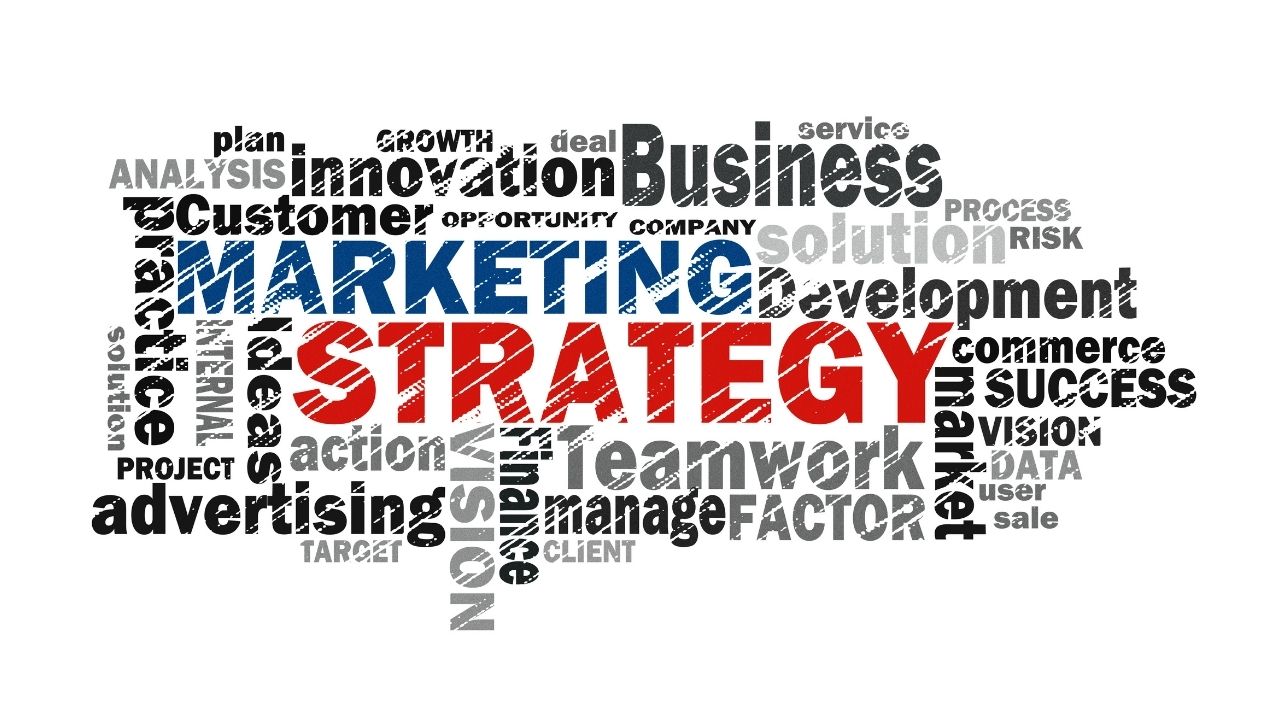
Content marketing ideas for B2B businesses are numerous and can take many forms. White papers, product comparison books, blog posts, and videos are just a few examples of possible content types. Depending on the target audience, business model and content type, each one of these types of content may prove to be effective. If you want to create content for B2B businesses that convert prospects into customers, you will need to create several types of content. These are just a few examples of lead-generating content types:
White papers
White papers are a great way of generating leads and brand awareness. If done correctly, they can be the inspiration for a year's worth of content marketing. While timely data is valuable, it can also limit your content development six months after the paper is released. To create a successful white paper, you'll need to conduct research and surveys on the topic. It is also a great way to determine your target audience and brainstorm solutions.
Product comparison guides
Buyer's guides can be a great content marketing strategy that appeals to the readers' need for information. In the defense industry, for example, consumers are concerned about counterfeit parts, incomplete quotes, and inaccurate data. This guide can help buyers determine if a product is right for their needs. It also helps the buyer understand how much to pay for a product. Product comparison guides are great content marketing ideas because they focus on the advantages the buyer will experience if he or she makes an informed purchase.

Blog posts
You wouldn't write about replacing the bathroom piping if you were a plumber. Instead, your writing might focus on modern faucets or rescuing an overflowing faucet. You might consider using pop culture references as a way to relate your niche to other plumbers. You might include a summary of the information in this article, or you could compare it with your industry. If you are a plumber, you can also use the power of NICHE TOOLs to your advantage.
Video content
Videos are a great way to connect with your audience and generate leads. Potential customers can learn more about your brand by viewing a video that highlights your company's history, strengths and challenges. This content can make you stand out among your competitors. For example, SimblaOCO's company overview video invites any viewer to experience the creation of a website. While videos can be tricky to produce, there are many benefits to including them in your marketing efforts.
Gated resources
Make sure to consider creating gated content for your website. These are content pieces in long form that add value to your audience. These resources will help you establish yourself as an expert in your field, and increase your potential for downloads. Below are some suggestions for gated content. Keep reading to learn more about how to make your gated resources even more effective. Keep these points in mind. These resources must be accessible for download and can be used immediately.

FAQ
How does content market work?
Content marketing works when you create value-added, engaging content.
Building relationships with your audience is possible when you share useful information, solve problems, entertain or engage them. Positive messages from trusted brands are more popular than negative ones.
People enjoy reading things that interest them. Your readers will keep coming back for more when you write something interesting.
Your content must inspire people to take action. This could be buying your product, signing-up for your newsletter or visiting your website.
A compelling copy is the key to effective content marketing. It should engage your target market, and provide them with the information that they require.
What are the 7 Steps of Content Marketing?
The content marketing process is seven steps long
-
Identify the problem
-
Learn more about what's happening now
-
Find new ideas
-
These strategies can be developed
-
They are worth a try
-
Measuring the results
-
Keep going until you find the right solution.
This method has been proven to work for small and large companies.
How to Use Blogging To Generate Leads For Your Business
B2B companies that are successful understand the importance online leads play in their success. Yet, despite this fact, many businesses struggle to convert traffic into qualified leads. Here are five reasons why you might not be generating qualified leads.
Reason 1: Your website is not optimized - Even if you have a blog, it's not making money! Blogging is a great way for new customers to be attracted. But, your blog posts must solve the problems of your target audience. Otherwise, you won't be making any money.
Optimize your blog to ensure it is profitable. This increases the likelihood of people finding your blog post.
After they find your blog article, make sure that you offer value by answering their queries and providing solutions as soon as possible.
Keyword Toolbox, a keyword research tool that allows you to search for keywords, is the best way. Add these keywords to page titles, meta descriptions, and body text.
CTAs should also be placed throughout your blog. CTAs also encourage readers to take actions such as signing up or purchasing products.
These actions increase the chances of a sale. They also give you an insight into what information users are looking for.
For help in starting a blog, see our guide on How to Start A Successful Blog.
Reason 2 - You don't know how to write. But once you start writing, the ideas will come quickly. Then they stop!
It takes time to establish a name for yourself and become an expert in your chosen field. To do this effectively, you must write about topics that interest your potential clients.
Writing should answer the question "Why should you hire me?" Keep your eyes on the problem when you write.
This will help you stand apart from other businesses that are just trying to sell products.
Your blog should help prospects as well as be helpful. You can also use your knowledge to educate others. For example, you could talk about the latest trends in your industry or share tips for saving money on home improvement projects.
Provide links to other resources that will help your viewers learn more about these topics. These resources can be videos, articles, or podcasts that are written by experts.
Reason 3: You don't have any clients, and you don't want them - all you need is to make more sales now!
Building a business is not an easy task. Building trust and rapport with your target market takes time.
However, you don't need to spend hours creating content if you aren't ready to connect with potential clients. Instead, place ads on social media websites like Facebook and LinkedIn.
To avoid wasting money on ineffective advertising, create ads based on the demographics of your ideal client. For instance, if you run a website design company, you probably have many female clients.
Instead of targeting men all the time, you can target women by their location, income level, or age group.
After you set up your ad, follow through by sending a message to your potential customers once you receive a click-through.
You don't need to pay for each person who visits your site. Some sources of traffic are more lucrative than others.
One example is hosting a contest for those who sign up via email. Or you could give away gifts to those who sign-up for your mailing address.
Here's the key: Find creative ways to draw visitors without spending too little.
Reason 4: It's not possible to afford advertising - your business is too busy running it, so you don't have the time.
Prioritize your work over your company. For example, if you are too busy running your company to advertise it then you won't have the ability to grow.
You might feel overwhelmed by all the tasks you have to do each day.
Get organized. Take one hour each week to organize and review what you need to do for the remainder of the week.
It will be easy to manage all the other tasks once you have started.
What are the benefits of content marketing?
The creation of high-quality, relevant content can be used to increase sales and lead generation. Content marketing offers a steady supply of new, original content that can then be used to promote products or services. Content marketing also increases brand awareness and trust among potential clients. The best part about content marketing is that it creates a positive image and reputation for your company.
How long should content marketing last?
That depends on your goals. Different businesses have different goals. Some are focused on short-term results while others seek long-term growth. We recommend that you start with three months of consistent content production and then evaluate your progress after that period.
What are some common mistakes people make in starting a content-marketing program?
A plan is the most important thing to do when you are creating content marketing strategies. Without a solid plan all of your efforts will be wasted. You'll create tons of content without knowing how to use it or where it should go.
A well-planned content strategy can help you focus, set goals and give direction. It keeps everything in line as you move to different phases. It might help you to analyze what posts get the highest engagement rates, for example, when you start social media marketing campaigns. This will give you an idea of which posts will lead to traffic to the site. You can then decide whether you want a series of articles or videos that are based on these results.
Another mistake people make is not estimating how long a content marketing campaign will be effective. It's logical to write content today if your website will be launched tomorrow. You may want to wait for more data if you have been working on a content-marketing strategy for six month before publishing new material.
It takes time to create great content. Don't rush yourself or underestimate this step.
Consider yourself a business person who is interested in content marketing. Our guide How To Make Content That Workes is a good choice. It outlines ten steps to create content that works and ensures that your marketing programs are efficient.
Is Content Marketing right for me?
Absolutely! It works for all types of businesses. You can sell products and services, offer support, or provide training. Content Marketing is a great way to let customers learn about your company, and keeps them connected.
Statistics
- Progress indicators (0–100%) allow each team member to see how attainable each goal is and understand what remains to be accomplished. (semrush.com)
- Forty-seven percent of buyers view 3 to 5 pieces of content before engaging with a sales representative. (mailchimp.com)
- Companies that use content marketing see approximately 30% higher growth rates than businesses not using it. (mailchimp.com)
- To further show the importance of this, 89% of people have stopped doing business with a company because of a poor experience. (neilpatel.com)
- Content marketing produces 3X more leads per dollar spent. Content marketing costs 62% less than traditional marketing. (criteo.com)
- We found that 40% of businesses don't have a documented strategy yet. (semrush.com)
- According to research compiled by Coschedule: Companies that publish 16+ blog posts a month get as much as 3.5x as much traffic as those that publish 0-4 posts a month. (criteo.com)
- Measure your goals with a progress indicator of 0-100%. Make your goals collaborative and transparent (semrush.com)
External Links
How To
What is a content marketing plan?
A content marketing program (CMP), or content marketing plan, is a strategic document that helps to establish your goals, objectives, as well as strategies for developing and executing a website. It is a plan for how to reach those goals via content creation and distribution.
The CMP can be broken down into three areas:
-
Your overall strategy. What do you want?
-
Your content strategy. How will you find the right people for writing, curating, and distributing your content.
-
The strategies you'll use in order to implement your strategy. What channels will your content be shared on? What content types will you create?
An effective CMP includes these four components:
-
Goal Setting – Define and measure your target audience.
-
Audience Research – Get to know your ideal customers and where to find them.
-
Strategy - Develop a clear vision of where you're going. Then break it down into smaller pieces.
-
Execution is key - Have realistic expectations about the time you can expect to see tangible results.